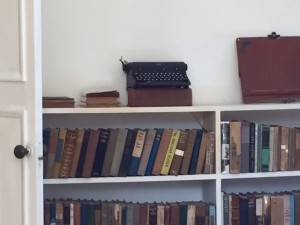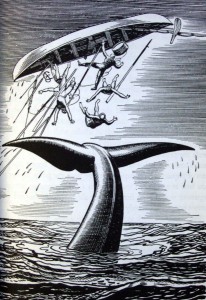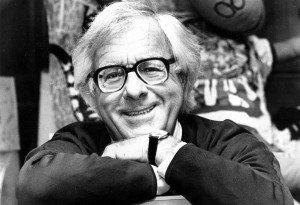Two weeks ago I posted the first part of this 2-parter, exploring five of the myths promised in the title. Feel free to check them out first, or last, doesn’t really matter because these aren’t presented as a hierarchy of potential disaster.
Any one of them can sink you.
Here, then, are the other five.
Fair warning, some of these will challenge your belief systems about how stories are developed and what makes them work… which is the point. Not everyone likes to be challenged, and not every writer will make a shift when called out on something that isn’t working, defending with this: “This is my process, I can’t do it any other way,” or, “Well, that’s not what Stephen King says.”
Fair enough. Very little about the writing process is precise. And not everything we hear from famous writers is valid for you, or for most, for that matter. That said, the criteria and benchmarks of what makes a story work are usually very precise.
That, too, is the point.
*****
Coincidentally (because this was written before I saw what I am about to point out), and happily, PJ Parrish posted on this next myth last Tuesday (March 29). We aren’t conspiring, but we are retrospectively agreeing. That dream that awakened you a few nights ago, leaving you certain the universe had just rewarded you with the Next Big Novel idea… we recommend you park it for a while and see how it survives the shelf time, not to mention, in the meantime, boning up on the criteria for what makes an idea viable, or not.
Myth #6: You can make a good novel out of just about any idea.
Too often the most important element of a story gets the least airtime within the writing conversation. And that is our Big Idea for a story. The seed from which your story must spring forth.
The Big Idea can arrive in several forms. It can be a character, suddenly so vivid in your mind you can smell their morning coffee. But that’s not enough. Because if a character is all you have, it’s not a story yet.
It can arrive as a speculative notion, a compelling what if? proposition. What if the Devil came to you in the form of your divorce attorney after your wife cheated on you? But that’s not enough, either. It’s not a story yet.
It can be a theme that you believe to be important. A novel about making love last. A novel about prejudice in the justice system or racial bias in a certain Southern town in the sixties. A historical novel with revisionist intentions. But that, again, is not enough. It’s not a story yet.
A storyline can unfold in an instant in your mind’s eye. You know how it opens, what happens, and how it ends. But that’s may not be enough, either. Because a story is more than beginning-middle-and-end, so it may not be a viable story… yet.
So what is a story?
Answer: A story is the narrative fulfillment of a complete and compelling premise. Which is the sum of all these things. Which means, to get it right, you need to understand what a premise actually is, and what it isn’t, the latter often in one of the forms just mentioned.
Incomplete, less-than-compelling premises trump great writing every time (unless you are a famous author already, then the bar actually lowers when it comes to premise; which is not to say famous authors actually reach lower, most don’t… but some do). If the idea is tame, vanilla, less than compelling and/or too familiar, you’re toast before the agent or editor reads a word of it.
Of course, who is to say what is and isn’t compelling where your premise is concerned? Great question. The answer depends on who is talking, and how familiar they are with the criteria for a functioning premise in the first place.
A compelling premise is not just about something, it is about something happening.
Emphasis on the italics there.
It all boils down to the degree of compelling energy, and if/how the premise hits all of the requisite component parts. Those parts are what cause a story to work, because they are all conjoined with the context of an unfolding narrative.
Ultimately, after the agent and the editor have had their say – which makes this myth critical for self-published authors – it is the marketplace that decides what is compelling. But at first it is only you. The whole ballgame hinges on how aligned your idea aligns with what the market feels is compelling.
Nobody will tell you to not write your novel because your idea isn’t good enough. That’s just not done out there. But perhaps it should be. Meanwhile, you are alone with this judgment. Is your idea worth a year of your life writing the initial drafts of your novel, after which someone else likely will tell you if the Big Idea was good enough, or not, after all?
We all roll that dice. But don’t kid yourself… not all ideas are worthy of a novel, because the very nature of it may minimize the things that make a novel work: dramatic tension leading to reader empathy in the form of emotional involvement.
That’s the formula, if you will, right there. And you get to decide.
There’s a reason the story of what you did on your summer vacation may not be the raw grist of the great American novel.
Unless you got kidnapped or were seduced by a mysterious billionaire prince. Then you might just have a shot.
Myth #7: Concept and Premise are the same thing.
So, after all that, what does constitute a good idea? There is an answer to that. An answer that builds on the supposition – the truth – that concept and premise are not the same thing.
All novels that work end up building upon a premise (see #6 above). But it is entirely possible to serve up a premise that is flat as the paper it will be printed on, and yet still checks off all the elemental boxes.
That’s because at the end of the day is a crap shoot, a matter of personal preference.
Concept is the central framework for the elements of the story. It is what causes someone to say, “Wow, now that sounds intriguing…” even before they actually read the novel itself.
Or better, even before you actually write it. If your concept has people begging to the see the story, pre-premise, then you’re on to something.
A love story set on the loading dock of a grocery store… hmmm. Chances are you need more.
But a love story set on the loading dock of a nuclear storage facility – a place we’ve never been, a place with inherent curiosity and potential for drama – that’s conceptual.
That’s all concept is: something that is conceptual about your premise. A target of intrigue or curiosity or rewarding vicarious experience. A notion or a setting or something specific about a character that is fresh and compelling and rich with dramatic appeal (think Superman or James Bond or even Stephanie Plum), even before you actually turn it into an unfolding, dramatically-vibrant story thread.
Myth #8: A first draft will always suck.
Everybody says this. They scream it out. To an extent that nobody challenges it.
But what if it’s not completely or always true?
If you’re someone who seeks to discover and flesh out their story using a series of drafts, then sure, your first draft will likely need a lot of work. Which is fine, that’s how you work. Those drafts are no different than the story planner who goes through a crate of three-by-five cards, it’s all just a means of searching for the story.
But if you’re someone that can visualize a story fully without needing to write a draft – and if you’re thinking “that can’t be done,” you need to amend that thought; it can’t be done by you, perhaps, but there are plenty of writers who absolutely can envision the bones of a story, front to back, totally in their head), and with some pondering and a pile of yellow sticky notes can construct a narrative front to back, then your first draft will live or die by the depth and sensibility of that vision.
Get that right, and your first draft can materialize as something that is a polish away from submittable. It happens all the time.
A first draft will always require further work. True enough. To fix typos, if nothing else. But the depth and nature of that work is a function of two things: your process, and your story sensibilities.
Here’s a non-myth you can count on: a draft won’t work until you have an ending in mind for it. Which, when you do have an ending in mind, is not to say you won’t or should alter that ending mid-stream. That works, too.
But if your draft starts with no ending in mind… then yes, your first draft won’t work.
Because you can’t foreshadow and optimize pace and build toward an ending that isn’t on your radar. And a novel won’t work until and unless those things happen on the page.
Myth #9: Your writing process is better than those of other writers.
This is just flat-out wrong. It may be better or worse for you, but there are infinite variations and gradations of the writing process, and rarely are any two exactly alike.
Here is where famous writers like to take a stand. In interviews and in keynotes they talk about what works for them, with the assumptive implication that this is the best process. Or perhaps more toxic, the only process.
Or you’ll hear writers with no more claim to effectiveness than you making statements like this: I can’t outline, it robs the process of joy and creativity… I can’t make up my story as I go along, that never works… when I outline I fall out of love with my story… and other variations on this theme.
The veracity of such comments, no matter who says them, begins and ends with them.
Once again, this is a case of writers stating what works in their own experience. When they position it as anything other than their truth, as if it is the truth about process… run.
The best process is what works for you.
Not based on what you’ve heard, but based on what you know. Not just about your story, but about the craft-defining elements and essences that go into any and all stories that work.
Sometimes your process actually doesn’t work, which seems to render the above sub-head inaccurate. But if it brings you closer to the truth about stories, if not storytelling, then for better or worse it’s actually working.
The key will be to recognize what you’ve learned, not only relative to your story, but to why something works, or not.
Myth #10: The bar is lower for self-published novels than it is for traditionally-published novels.
If getting your novel out there is the primary and even solitary goal, then this may be true. If for no other reason than no initial vetting process stands in your way.
But if earning a readership and building a career is the goal, then this is a destructive myth that will sabotage your dream. Certainly some worthy novels are rejected by traditional publishers, and just as certainly some worthy writers skip traditional publishing altogether in quest of shorter to-market timelines, rights issues and larger royalty percentages.
So what’s the harm of lowering the bar?
Because it will prioritize getting it out there over getting it right. It will seduce you into believing that craft is less important that completion, and that completion isn’t driven by how your novel stacks up to a very powerful and proven roster of criteria and benchmarks.
Too often self-publishing is settling. Trouble is, there is no way to be certain… was I rejected because it’s not good enough, or because of timing or other factors? Will the marketplace respond to my story in a way that agents and editors didn’t?
Therein resides the crazy-making paradox of self-publishing. There’s no way to know, until you try. The risk is that your very worth self-published novel may only sell 200 copies, regardless of how well you followed the script for making Amazon love you.
Either way, when you choose, you’ll always have the nagging question of what could have been. Either way, though, the highest possible rendering of craft will serve you, every time.
And that’s a choice, too.
 Price. Scared the bazoonga out of me. Still a favorite camp classic. But I’m always a little nervous in the dark.
Price. Scared the bazoonga out of me. Still a favorite camp classic. But I’m always a little nervous in the dark.











